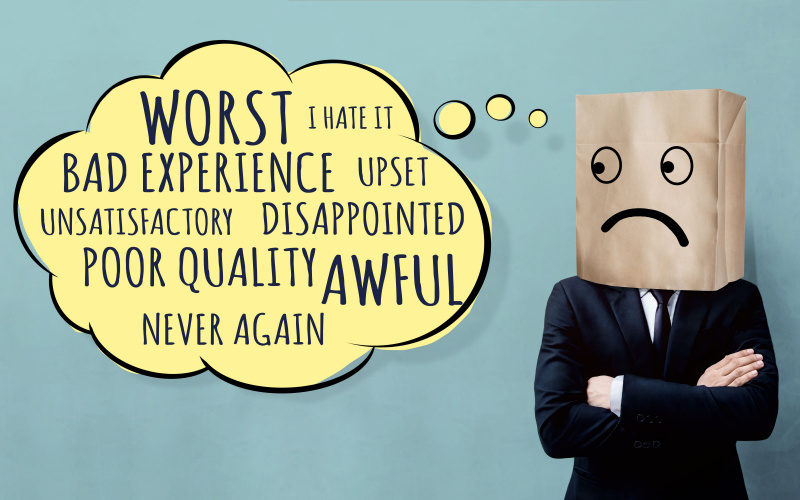The cost of bad customer service in Australia is estimated to be $74 billion annually, according to a recent study by Qualtrics. This sobering figure underscores the importance of prioritising excellent customer service in today’s competitive landscape. The true cost, however, might be even higher, considering the additional strain placed on understaffed teams struggling to meet rising expectations.
Perhaps even more concerning is the disconnect between business perception and customer reality. The study reveals that customers report experiencing poor service one in every ten interactions, a stark contrast to what many businesses believe they are delivering. This gap suggests a blind spot for many companies, leaving them vulnerable to lost revenue, brand damage, and dissatisfied customers who readily share their negative experiences online.

Fran Southward, CEO of Auscontact Association, agrees that poor customer service has a financial impact. Whether it’s $74 billion or not, I can’t comment. What’s interesting in the findings is that the number of complaints has reduced considerably over the past 12 months, down from 1-in-5 to 1-in-10.That’s a big shift and something that deserves further analysis. Is this reduction due to changing customer behaviours relating to complaints, changing expectations when it comes to customer service? Or are organisations recognising the broader impact poor customer service has on their bottom line, resulting in them addressing the root cause and making a greater investment in improving the customer service experience.
Understanding the customer service pain points
The study highlights that the common pain points reported by customers include long wait times, inefficient resolution processes, lack of empathy and personalisation, and inconsistent service quality across different channels. Southward highlights, “When you talk about the costs or the impacts poor customer service has, it is important to look at customer service from an end-to-end. Poorly designed online solutions, services that require customers to move between channels, and an overall lack of clarity around self-service options are often where the customers view of poor service begins. The interaction with an agent over the phone is often the frustrating end stage of a consumer attempting to resolve their issues.
“What we do know, from other industry research, is that once consumers get through to a live agent and their problems are resolved, the perception of satisfaction with that interaction is extremely high. On the other hand, if the human can’t help them, dissatisfaction increases exponentially. When customers do get through to agents in a contact centre, they want timely, accurate, relevant, and tailored solutions.’
Unique customer service challenges for Australian brands
Australian brands face a unique set of hurdles when it comes to delivering a seamless and positive customer experience. From the vastness of the continent to the diverse cultural landscape, these challenges require a strategic and nuanced approach.
The most critical issue impacting customer service in Australia, potentially, is the recruitment and retention of skilled customer service professionals. A recent report by Talent.com found that customer service roles are among the most in-demand in Australia. Southward comments, “It’s impacting a broad set of capabilities within the customer service environment, ranging from technical roles such as data miners, analysts, and system designers, through to team leaders, and customer facing roles. With record levels of attrition continuing to impact the contact centre industry, ensuring customer service staff have the level of expertise, organisational knowledge, along with traditional soft skills is a challenge facing many organisations. The way customer service staff interact with consumers makes or breaks an organisations reputation with that customer, influencing the perception of the brand and impacting their willingness to continue a consumer relationship with them.”
Businesses can try to address this challenge by offering competitive salaries and benefits, providing opportunities for career development, and fostering a positive and supportive work environment. Investing in employee training and creating a culture of empowerment can also improve job satisfaction and retention rates. However, as Southward points out, “Theses job roles seem to get the lowest consideration when it comes to investment, salary and remuneration, personal development, and career pathways. There is a real opportunity for us to redefine these front-line, customer service roles, highlighting the career opportunities within the contact centre environment, as well as those broader leadership roles within an organisation. Sometimes these roles are viewed as ‘that job you have until you find something better’.”
Automation and digital transformation

Labour intensive work can be minimised, while increasing the capacity of each worker, through automation. It offers the potential free up resources that can be allocated to training and career development of existing staff. Todd Gorsuch, CEO of Customer Science, highlights how automation and digital transformation can help streamline and create more efficient services, “Use of advanced technologies like AI and RPA combined with human centred service design can help to create better and more efficient services. By focusing on understanding customer needs, preferences, and pain points, human-centered design helps tailor service offerings and communication styles for individual customers. This fosters a sense of value, enhances loyalty, and builds stronger customer relationships”.
“By automating repetitive tasks like data entry, form processing, and scheduling, advanced digital technologies can free up human staff to focus on more complex and strategic tasks requiring human judgment and creativity. This leads to increased productivity and faster resolution times, as well as greater employee engagement and job satisfaction”, says Gorsuch.
Unfortunately, Australian organisations can be a tad slow when adopting and applying the latest technology and innovations, compared to companies in other countries. Southward says, “Some of our counterparts in other regions have seen a much faster adoption and rollout of new technology, which has resulted in significant impacts.”
“There also remain challenges with some organisations, when decision making and accountability are somewhat splintered. Decisions around what technology an organisation may adopt might not sit with people that are customer facing or involved in that customer design strategy. There is a definite need to ensure service delivery leaders have a seat at the table when it comes to determining the right investment”, adds Southward.
In terms of customer service and reputation, Australian companies are not competing just with local brands and companies. Australian businesses can face stiff competition from international brands with established global customer service reputations. These competitors, with economies of scale driving their operations, often have larger budgets and resources, making it difficult for smaller Australian companies to stand out.
The future of customer service in Australia lies in building a customer-centric culture, empowering employees, and leveraging technology wisely, all while navigating the unique challenges of the local market. Only then can businesses truly bridge the gap between perception and reality, delivering exceptional service that wins hearts, minds, and wallets.

